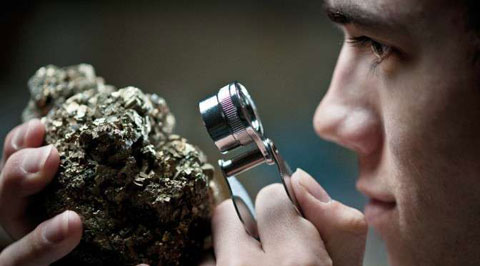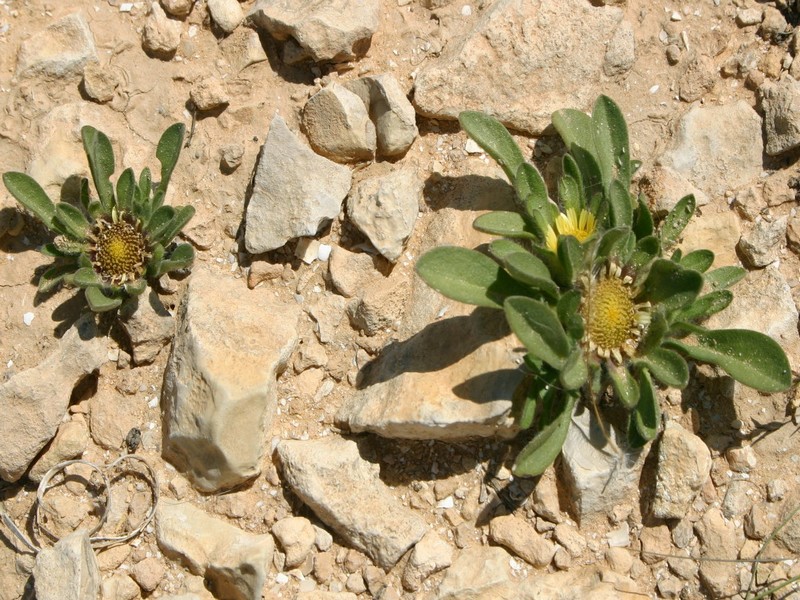Recherchez sur le site !
Recherche avancée / SpécifiqueCatégories publications
+ Sciences De La Terre - Archéologie - Astronomie - Spéléologie - Ecologie - Pédologie - Volcanologie - L'hydrogéologie - Géomorphologie - Minéralogie - Pétrologie - Paléontologie - Géologie + Climatologie - Réchouffement climatique - Changement climatique + Plantes - Plantes Aromatiques - Plantes médicinales + Zoologie - Faunes + Botanique - Flors + Sciences humaines - Géo Eco Tourisme - L’anthropologie - L'Histoire - Démographie - Sociologie - Géographie - Patrimoine culturel
Géo éco tourisme inclusif

Géoparc et Recherche Scientifique
Le coins de l’étudiant



Blog Géoparc Jbel Bani
Chemical constituents and antioxydant activity of the essential oils of Perralderia coronopifolia Cosson subsp. Purpurascens shrub of Oasis of Tata from south east of Morocco (Géoparc Jbel Bani)
By Aicha Hamdouch, A. Asdadi, Bouchra Chebli, L. M. Idrissi Hassani
Laboratory of plant biotechnology, Faculty of science B.P 8106, University Ibn Zohr, Agadir 80000, Morocco
Laboratory of biology, School of applied sciences, B.P 1136, University Ibn Zohr, Agadir 80000, Morocco
b.chebli@uiz.ac.mamail: -Corresponding author: E*
Received 23 Oct 2017, Revised 17 Nov 2017, Accepted 25 Dec 2017
Abstract
The objective of the present work is to identify the chemical composition and to test the antioxidant activity of the essential oils of Perralderia coronopifolia Cosson subsp. Purpurascens (Asteraceae) collected in the oasis of Tata located in south east of Morocco. The essential oils was obtained by hydrodistillation method and analyzed by GC-MS. Antioxydant activity was tested using DPPH (2, 2-diphenyl-1-picrilhydrazyl) assay. A total de 27 compounds were identified representing 83.59 % of the essential oils. The main compounds were γ-eudesmol (24.4%), α-eudesmol (19.77) and cis-nerolidol (13.97). antioxidant DPPH assay revealed an IC50=3.81 mg/mL. Constituents and antioxidant activity of the aerial part of the Perralderia coronopifolia Cosson subsp. Purpurascens were reported for the first time to our knowledge.
Keywords: Perralderia coronopifolia Cosson subsp. Purpurascens, Essential oil, GC-MS, DPPH
1. Introduction
The North African genus Perralderia (Asteraceae – Inuleae – Inulinae) includes three species. They grow in the elevated regions of Morocco, Algeria and Libya in the north-western part of the African continent, primarily in the mountainous regions, Perralderia coronopifolia Cosson subsp. purpurascens (Batt.) Maire (Asteraceae) is a wild plant endemic of Morocco and Algeria [1].
The studied species was collected in the oasis of Tata. This Pre-Saharan region is a center of excellence at national level in folk-medicine. This province stretches from the southern slope of the Anti-Atlas to the Oued Drâa which marks the border with Algeria and the Saharan regions. It occupies an area of 26.274 sq.km.The area is characterized by a hyperaridity marked by low rainfall of around 100 mm, of stormy character. Its population is mainly rural (70%) [2].
The aim of this study is first to identify the constituents of the essential oils (EOs) of leaves and stems of Perralderia coronopifolia Cosson subsp. purpurascens and second to test the ability of extracted EOs to scavenge the free radical DPPH. The present study is to our knowledge the first one which deals with chemical composition and antioxidant activity of EOs from leaves and stems of Perralderia coronopifolia Cosson subsp. purpurascens.
Perralderia coronopifolia Cosson subsp. purpurascens bears several vernacular names “Ifenzi n’oudaden”, “hamrat er-ras”, “lahiet et-tis” and others [3, 4] among the Saharan population of Morocco and Alger. It is considered to be toxic to animals and is used by the Saharans to depilate the skins before the tanning [3, 4].
Antioxidants are of great importance in terms of oxidative stress [5]. Because of their therapeutic virtues, medicinal species are more and more investigated to discover new drugs (antioxidants for example) to reduce risks of cancer, cardiovascular disease, diabetes and other diseases associated with process of ageing [6].
Figure 1 Photograph of Perralderia coronopifolia Cosson subsp. Purpurascens at the time of collection in the oasis of Tata.
2. Material and Methods
2.1. Plant material
The aerial part (leaves and stems) of Perralderia coronopifolia Cosson subsp. purpurascens (Figure 1) was collected randomly in the oasis of Tata in the southern-east of Morocco (Figure 2) during May-July 2015. Plant samples were air dried in the shade then stored in the dark at the laboratory temperature until use for the extraction of EOs.
Figure 2 Location of oasis of Tata in South-east of Morocco
2.2. Isolation of EOs
One hundred grams of air dried plant material of Perralderia coronopifolia Cosson subsp. purpurascens were submitted to hydro-distillation with a Clevenger-type apparatus according to the European Pharmacopoeia [7] and extracted with one litter of distilled water for 5 hours (until no more EOs was obtained). The EOs obtained was dried under anhydrous sodium sulphate and stored at 4 °C until used.
2.3. Analysis by gaz chromatography-mass spectrometry (GC-MS).
GC-MS analysis was carried out with a 5973N Agilent apparatus, equipped with a capillary column (95 dimethylpolysiloxane-5% diphenyl), Agilent HP-5MS UI (30 m long and 0.25 mm i.d. with 0.25 μm film thickness). The column temperature program was 50 °C during 2 min, with 4 °C/min increases to 180 °C, then 20 °C/min increases to 280 °C, which was maintained for 10 min. The carrier gas was helium at a flow-rate of 1 mL/min. Split mode injection (ratio 1:30) was employed. Mass spectra were taken over the m/z 30–500 range with an ionizing voltage of 70 eV. The individual compounds were identified by MS and their identity was confirmed by comparison of their retention indices, relative to C8-C32 n-alkanes, and mass spectra with those of authentic samples or with data already available in the NIST 2005 Mass Spectral Library and in the literature [8].
2.4. Antioxydant activity
The antioxidant activity was assessed in vitro by measuring the scavenging power of free radical DPPH by EOs of Perralderia coronopifolia Cosson subsp. purpurascens with some modifications according to Chen et al. [9] and Leiltao et al. [10]. Methanol solution (500 μL) of EOs (1 mg/mL, 0.5 mg/mL, 0.25 mg/mL, and 0.125 mg/mL) was mixed with 500 μL of methanol solution of DPPH (0.004 %). After an incubation period of 30 min in the dark at ambient temperature, the absorbance is read at 517 nm wavelength. The inhibition of free radical DPPH by butylhydroxytoluene (BHT) and covi-ox T50 were also analyzed with the same concentrations and the same conditions for comparison. The inhibition of free radical DPPH percentage I (%) is calculated using equation:
I (%) = 100 × (Acontrol - Atest)/Acontrol
Where Acontrol is the absorbance of the control (containing all reagents without the test product) and Atest is the absorbance of the test compound (containing all reagents and the test product). The value IC50 is calculated from the graph of the DPPH scavenging effect percentage against the sample concentration and it is used to characterize the antioxidant activity of different examined extracts. All tests were performed in triplicate for each concentration.
2.5. Statistical analysis
All data were subjected to statistical analysis of variance using STATISTICA software, version 6, Stat-Soft, 2001, France. Newman & Keels tests were used to segregate treatments which were significantly different (p < 0.05).
3. Results and discussion
3.1. Chemical composition of EOs of Perralderia coronopifolia Cosson subsp. Purpurascens
The yield of EOs of Perralderia coronopifolia Cosson subsp. Purpurascens was 0.21%. The results of GC-MS analysis showed the identification of 27 constituent representing 83.59% of the total EOs composition (Table 1). The major compounds were γ-eudesmol (24.4%), α-eudesmol (19.77) and cis-nerolidol (13.97%). The EOs composition was dominated by oxygenated sesquiterpenes (68.94%) and sesquitepene hydrocarbons (14.65%) followed by oxygenated monoterpenes (0.47%) and monoterpene hydrocarbons (0.31%). 20 compounds representing 14.89% of the EOs were not identified.
The EOs from the leaves and stems of Perralderia coronopifolia Cosson subsp. purpurascens composition had never been described in the literature in our knowledge. Perralderia coronopifolia Cosson subsp. purpurascens had been collected in the oasis of Tata situated in the South east of Morocco. Saharan plants accumulate specific secondary metabolites to grow and to adapt to difficult conditions. This enrichment in metabolites is exploited by Saharan population to treat illnesses. Perralderia coronopifolia Cosson subsp. Purpurascens contains 83.59% of sesquiterpenoids. The sesquiterpenoids exhibit a wide range of biological activities. In fact they are found to be anticancer [11-14] antiviral [15, 16] antibacterial [17-21] and antifungal [22].
Table 1. Chemical composition de Perralderia coronopifolia Cosson subsp. Purpurascens Eos
RT: retention indices relative to C8-C24 n-alkanes
3.2. Antioxydant activity
Antioxidant DPPH assays, evaluate the H-donating or radical scavenging ability of the EOs. It appears from the obtained results that antioxidant references used in this test coviox T50 and BHT were the most effective to scavenge the free radical of DPPH with IC50 respectively of 0.003 mg/mL and 0.026 mg/mL.
The difference is significant (p<0.05) between antioxidant effect of EOs of Perralderia coronopifolia Cosson subsp. purpurascens and antioxidant references tested (Table 2). However the IC50 of tested EOs is high translating a low antioxidant effect but the EOs was able to reduce the stable radical DPPH to the yellow colored diphenylpicrylhydrazine and this result could be exploited.
Table 2 IC50 values (in [mg/mL] ± standard deviation) of DPPH scavenging effect test.
The scavenging activity observed for Perralderia coronopifolia Cosson subsp. purpurascens EOs could be explained by the high amounts of its major components γ-eudesmol (24.4%), α-eudesmol (19.77) and cis-nerolidol (13.97%). However, it’s difficult to attribute the antioxidant effect of total EOs to one or few active compounds. Both minor and major compounds should make a significant contribution to the EO’s activity [22].
4. Conclusion
This study showed that γ-eudesmol, α-eudesmol and cis-nerolidol were the major components of the EOs of Perralderia coronopifolia Cosson subsp. purpurascens. The test of scavenging effect of DPPH revealed that the EOs of studied species had an antioxidant activity. This activity is possibly due the major components.
References
1. P. ELDENÄS, Bot. J. Linn. Soc. 102 (2) (1990) 157-173.
2. M. Abouri, A. El Mousadik, F. Msanda, H. Boubaker, B. Saadi, K. Cherifi, J. Med. Plants Res. 1 (2012) 99-123.
3. V. Hammiche, R. Merad, M. Azzouz, Plantes toxiques à usage médicinal du pourtour méditerranéen, Springer (2013)171-174.
4. J. Bellakhdar, La pharmacopée marocaine traditionnelle. Ibis Press, Paris (1997).
5. A. Helen, K. Krishnakumar, P. Vijayammal, K. Augusti, Toxicol. Lett 116 (2000) 61-68.
6. A. Nugroho, E.J. Kim, J.S. Choi, H.J. Park, J. Pharm. Biomed. Anal 89 (2014) 93-98.
7. Council of Europe, European pharmacopoeia, 3rd ed., Editor (1997).
8. R.P. Adams, Identification of essential oil components by gas chromatography/mass spectrometry. Allured Publishing Corporation (2007)
9. C.N. Chen, M.S. Weng, C.L. Wu, J.K. Lin, J. Evid. Based Complementary Altern Med. 1 (2004) 175-185.
10. G.G. Leitão, S.G. Leitão, W. Vilegas. Z. Naturforsch, C Bio. Sci. 57 (2002) 1051-1055.
11. M. Sylvestre, J. Legault, D. Dufour, A. Pichette, Phytomedicine 12 (2005) 299-304.
12. C.C. Wang, L. G. Chen, L.L. Yang, Planta medica 68 (2002) 204-208
13. S.Y. Ryu, J.O. Kim, S.U. Choi, Planta medica 63 (1997) 384-385
14. V. Saroglou, A. Karioti, C. Demetzos, K. Dimas, H. Skaltsa, J. Nat. Prod. 68 (2005) 1404-1407.
15. D.R. Hwang, Y.S. Wu, C.W. Chang, T.W. Lien, W.C. Chen, U.K. Tan, J.T. Hsu, H.P. Hsieh, Bioorganic Med. Chem. 14 (2006) 83-91.
16. T. Efferth, M. Marschall, X. Wang, S.M. Huong, I. Hauber, A. Olbrich, M. Kronschnabl, T. Stamminger, E.S. Huang, Int. J. Mol. Med. 80 (2002) 233-242.
17. T. Rabe, D. Mullholland, J. Van Staden, J. Ethnopharmacol. 80 (2002) 91-94.
18. R.S. Taylor, G.N. Towers, Phytochemistry 47(4) (1998) 631-634.
19. V.U. Ahmad, R. Khatoon, Sci. Pharm. 63 (1995) 231-231.
20. T. Kato, B. Frei, M. Heinrich, O. Sticher, Planta medica 62 (1996) 66-67
21. M.M. Al-Dabbas, F. Hashinaga, S.A. Abdelgaleil, T. Suganuma, K. Akiyama, H. Hayashi, J. Ethnopharmacol. 97 (2005) 237-240.
22. S.S. Cheng, H.Y. Lin, S.T. Chang, J. Agric. Food Chem. 53 (2005) 614-619.
Source web: Aicha Hamdouch
Dictionnaire scientifique
Plus de 123.000 mots scientifiques
Les publications
Géo parc Jbel Bani

Circuits & excursions touristiques

cartothéques


Photothéques
Publications & éditions





